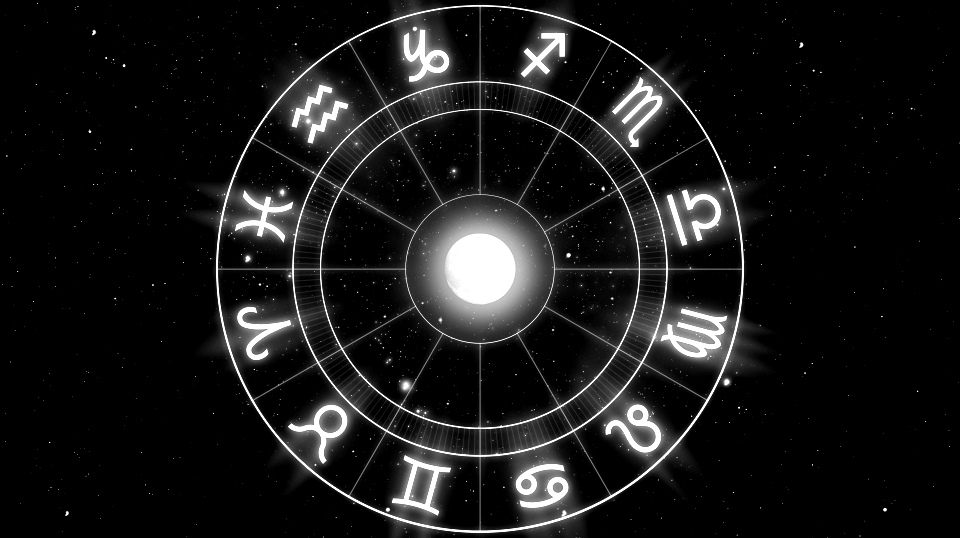The Zodiac Wheel and Cosmography
In the Zodiac, we looked at the zodiac and described how it had come about. Just to remind you: the zodiac is an imaginary area, to understand it we have first to imagine the Earth as being in the centre of a large hollow sphere. As we look out from Earth we are seeing the inside of this celestial sphere. The zodiac is a band inside this sphere in which the stars and the planets seem to move. This band is then divided into the twelve signs of the zodiac. This is the zodiac wheel that you learned to draw.
But how is this band positioned on the celestial sphere? Its position is determined by two “imaginary” circles:
The ecliptic is the first imaginary circle around the Earth. it is the “apparent” pathway of the Sun as it seems to move around the Earth.
The celestial equator is the second circle. This circle stands immediately above the Earth’s equator. Imagine it like the equator being pushed out from the Earth until it touches the celestial sphere. This celestial equator divides the sky into the northern and southern hemispheres. Below you can check the picture of the zodiac wheel.

The zodiac is created by imagining a band approximately 17 degrees across and centred on the celestial equator. Degree 0 of the zodiac is found at the intersection of the celestial equator and the ecliptic. This first point, where the ecliptic meets the celestial equator, is called the vernal point, (from the Latin vernus, spring) or point gamma (ancient musical scores used the Greek letter gamma to designate the first note).
Astronomically, the vernal point is the point where the Sun leaves the southern hemisphere to enter the northern hemisphere. Astrologically, it coincides with the arrival of the Sun in the sign of Aries, at point 0 degrees of the zodiac, on 21 March, the vernal equinox.
The second point where the ecliptic bisects the celestial equator is called the autumnal equinox (this is the first point of Libra). In the northern hemisphere, the Sun reaches these two points at the beginning of spring and the beginning of autumn. This is reversed in the southern hemisphere.
The summer and winter solstices mark the points of the ecliptic furthest from the equator. The summer solstice is marked when the Sun enters Cancer and the winter solstice occurs when the Sun enters the sign of Capricorn. This is reversed in the southern hemisphere.
What is Cosmography?
Cosmography is a representation of the world or universe. It is the science that deals with the whole order of nature. The word comes from the Greek kosmos, translated as the universe, but whose first meaning was order, and graphikos, meaning: relating to writing or what is written; in other words, the written order of things.
Man, originally had no power over the elements and forces of nature. Very early on, he realised that unlike himself whose presence on Earth was not eternal, the four elements: Fire, Earth, Air and Water were ever-present. To ensure his survival on Earth, he had to protect himself against these elements. He had to understand that the universe was not chaotic, it was well structured and solid.
This order was apparent in the heavens and they contained vital information which was useful for the awakening of intelligence and awareness. This had to be recorded and written down, hence the appearance of the zodiac as a method of record, a way of passing down through the generations what had occurred in their lifetime.
Whether they really saw signs in the sky, or whether these were figments of their imagination, conjured up because they were afraid of being alone in the world and the universe, is not known. But what is indisputable is that the people of the ancient world transposed the magical links they had created with the world around them into a privileged relationship with the heavens.
To them, the immensity of the sky was both marvellous and alarming: they filled it with familiar animals from Earth. By placing landmarks in the sky – elements and forms of life belonging to their territory – they were able to establish a link, a communion even, with the heavens. They spoke to the sky, and amazingly they received answers.
Also, if you are interested in the scientific names of animals, you can check out this interesting article – List of scientific names of animals.
The word “astrologer” (from the Greek astron, star, and logos, speech) translates as “the one who talks to the stars”. You could also add that he is the one the stars speak to. The astrologer has a certain knowledge that he uses to observe and consult the stars before he draws his conclusions and makes his interpretations. Once you have mastered the basic principles of the subject, you are well on the way to becoming an amateur astrologer.
Learning astrology
Longitude is an imaginary line running down around the surface of the Earth, calculated as 180° or twelve hours more or less from the Greenwich meridian. terrestrial longitudes are used to divide the Earth into time zones.
Latitude is an imaginary line drawn around the width of the Earth, calculated as 90° more or less from the equator, depending on whether it is situated north or south of the equator.
The equator is an imaginary line perpendicular to the axis running from pole to pole, which divides the terrestrial globe into two equal parts: the hemisphere.
The hemispheres are the two halves of either the terrestrial globe of the celestial sphere, divided by the terrestrial or celestial equator line. They are the northern hemisphere and the southern hemisphere.
